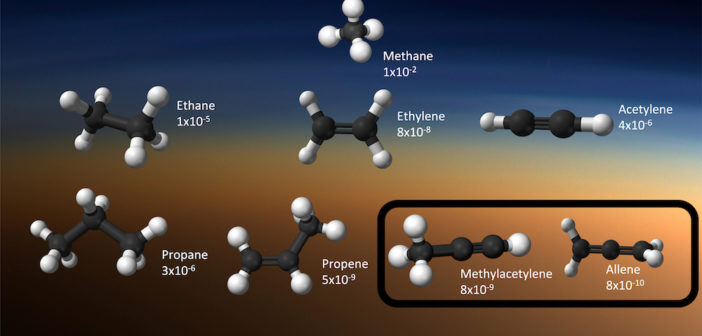This illustration shows some of the molecules that have been discovered in the hazy atmosphere of Saturn’s largest moon, Titan. Though nearly 98% of Titan’s stratosphere is molecular nitrogen, there’s just enough methane — CH4 — for some interesting chemistry to happen when ultraviolet light is thrown into the mix. After this light breaks apart the methane molecules, complex hydrocarbons can form as these newly freed fragments link together in chains. A team of scientists led by Nicholas Lombardo (U. of Maryland, NASA Goddard SFC, Yale U.) has now made the first unambiguous detection on Titan of a hydrocarbon known as propadiene (CH2CCH2; also called allene). This colorless, flammable gas had, before now, never been detected beyond Earth. Scientists believe that Titan’s atmosphere may resemble Earth’s primordial atmosphere, so understanding its component molecules is an important step to learn more about how our own planet evolved. To read more, check out the original article below.
Citation
“Detection of Propadiene on Titan,” Nicholas A Lombardo et al 2019 ApJL 881 L33. doi:10.3847/2041-8213/ab3860
